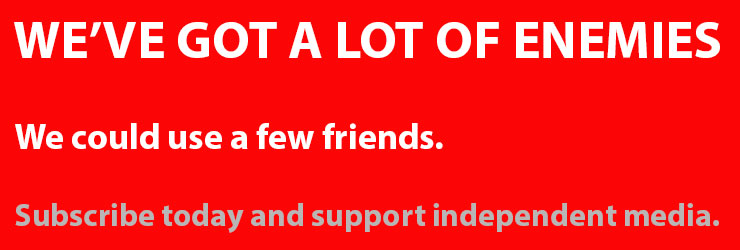The never-ending debate on Australia’s labour market is being conducted in the absence of reality and real figures, writes Jeremy Poxon from the Australian Unemployed Workers Union.
Like clockwork, each month, packs of journalists, business leaders and politicians deliver their take on what the ABS’ official monthly unemployment rate tells us about the health of the labour market and job creation programs, largely from their (self-interested) vantage points.
Taking a cursory look at the latest ABS stats, you’d think our labour market was performing well with the official unemployment rate dropping down from 5.9% at the start of the year to now around 5.6%. For most pollies and pundits, these superficial dents are cause for celebratory back-patting about how well our economy is functioning and how many jobs it’s creating.
However, for many Australian jobseekers and marginally attached workers, like myself, the official monthly unemployment figures feel farcically inept at characterising how challenging it is to secure consistent work right now. We know, far more keenly than our experts, that it’s simply not accurate that 5.6% of us who want a full-time job don’t have one. Instead, this unemployment measure, first established in the 1960’s, has failed to catch up to the severe structural changes in our labour market.
Fact is, the unemployment rate was developed in an era when full-time male breadwinners served as the basis of the labour market. This makes the reality that politicians and the media still lean on it so wholly and heavily quite staggering.
Over the last few decades, the labour market has radically transformed and casualised: underemployment has ballooned as a critical labour category, as well as what the ABS calls “hidden unemployment”. Yet, proper understanding and recognition of these groups is missing from public debate and policy-making, because it is not explicitly captured by the official (and somewhat anachronistic) unemployment rate.
As a general rule, the more you broaden the ABS measures — to include groups of people who just didn’t exist in the “full employment” era (eg. casual and discouraged workers) — the more disturbing a picture you get of the labour market in Australia.
Recently, The Australian’s economics correspondent Adam Creighton came out swinging against the ABS, particularly its “strict” definition of unemployment, which he says paints a dishonest figure of how many people are seeking work. For example, Creighton points out how ludicrous it is that a person who works for only one hour or more in the survey week (which can be unpaid/voluntary work) is still classed as ’employed’ by the official measure.
It’s rare and encouraging to see a mainstream paper — a Murdoch rag, no less — endeavouring to develop a broader, and more accurate, definition of unemployment that factors in the growing underemployed, as well as people who have simply given up looking for work.
Indeed, many people who are expelled or alienated from work have become invisible to scientific data — these discouraged workers are barely recognised in our political economy. If the unemployment rate is kept relatively low because a significant number of people believe job searching is hopeless and have given up, then it’s telling a very misleading story.
Dr Victor Quirk, a labour market sociologist, and Research Associate at the Centre of Full Employment and Equity, concurs that the ABS’ outdated definitions of ‘employed’ and ‘unemployed’ significantly affects their results.
“The more casualised and precarious a labour market is, the more this measure understates the level of unutilised willing labour in an economy – and Australia has a highly casualised labour market.”
The Australian’s analysis, with its expanded unemployment definitions, is refreshingly clear-sighted; however, less encouraging is the way it endorses rash Trumpesque rhetoric about how we need to completely bin the official statistics, which deliberately deceive us. Here, Creighton also wheels out Gary Morgan – a staunch critic of the ABS, who (self-interestedly enough) believes his own research company’s data is far superior. Altogether, this analysis tends to portray the ABS as some nefarious organisation out to pull the wool over our eyes in service of the government who (under)funds it.
While recognising the limitations of its figures, Dr Quirk leaves this conspiratorial thinking aside, believing the ABS to be a highly reliable statistical service that “… needs to be better funded so that it can release its data products in a more timely fashion. For example, we wait over a year to find the level of people who narrowly miss out on being counted as unemployed, because either they stopped applying for jobs, or they have applied but they can’t start within a week. There are now over a million people in this category – we should get this figure every month alongside the unemployment rate.”
But because of the lack of funding and resources at its disposal, the ABS releases these figures only once per year, and a year late.
It’s true that, when used as the stand-alone measure, the ABS unemployment rate gives a limited picture that underestimates employment, but, this is more a problem to do with our head-line grabbing, sound-bite delivering media and political institutions than a shady, sneaky statistics bureau.
The problem isn’t so much how the ABS calculates its data (it communicates those methodologies quite transparently); rather, the way in which politicians, journalists and business leaders use its unemployment rate as the sole measure of a very complex reality.
According to Dr Quirk, the unemployment rate should be viewed in the context of the ABS’ other labour force data, which he says provides a useful and reliable picture of what’s happening. Quirk points out that the ABS also publishes a regular labour underutilisation rate that we rarely hear about.
As he sees it, “the problem is not with the ABS, but with what governments and the media choose to make prominent of its many statistical products”.
Indeed, politicians can cherry-pick and spin unemployment figures to tell virtually any story they like. At the same time, the media are generally ill-informed and time-poor, often reporting on what’s put in front of them with little time and/or inclination to dig deeper into the figures.
Creighton and Greg Morgan’s crusade against the ABS hasn’t gone un-thinkpieced. It particularly struck the ire of The Guardian’s Greg Jericho who flew into action to protect the sanctity of the official employment rate, believing that, while it’s not perfect, it’s all that protects us from right-wing populists making up their own figures.
While Jericho recognises the official unemployment rate gives a limited picture, he thinks that, by discrediting the ABS, right-wing pundits like Creighton and Morgan are throwing the baby out with the bathwater to suit their populist ‘fake news’ agenda.
Sadly, Jericho counters right-wing hysteria with his own centre-left hysteria: that having an honest discussion of the limitations of the official unemployment figure may lead us all into a fact-less dystopia.
Here, Creighton and Jericho have unwittingly highlighted the flawed ways in which both conservatives and progressives politicise unemployment data: one uses the unemployment rate to make an appeal to destructive right-wing populism, the other uses it to re-enforce a do-nothing status quo complacency.
For the most part, both sides of media and politics have done a poor job at interpreting and displaying unemployment data accurately and thoughtfully. Needless to say, without accurately presented data on the nature and extent of the problems faced by unemployed and underemployed workers, meaningful calls for action and policy change are impossible.
It’s worth mentioning that the Australian Unemployed Workers Union researches and publishes its own monthly figures to paint a broader picture of the state of unemployment for its members. According to this research, there are currently 17 job applicants for every position available — again, another vital statistic rarely acknowledged by politicians or the media.
Commentators like Creighton and Jericho are invested in showing how the data supports the legitimacy of their own ideological preferences — if only they used their energies and platforms to present a more comprehensive picture of what life is like for our millions of un/underemployed.
Dr Quirk, who has worked as an unemployment counsellor for the last 20 years, believes that through these ideological tactics “… we are conditioned not to see that we have the means at our disposal to redress obvious social need.
He adds: “Every day we waste tens of millions of hours of potential work in this country, work that could be done to improve the living standards of all of us.
“We have an abundance of human labour power, the most powerful renewable resource at our disposal, capable of enhancing the quality of millions of lives, yet we ignore it.
“It is not, however, the fault of the ABS that we are rarely reminded of this reality.”
Donate To New Matilda
New Matilda is a small, independent media outlet. We survive through reader contributions, and never losing a lawsuit. If you got something from this article, giving something back helps us to continue speaking truth to power. Every little bit counts.






